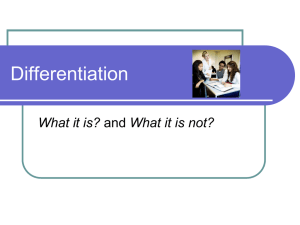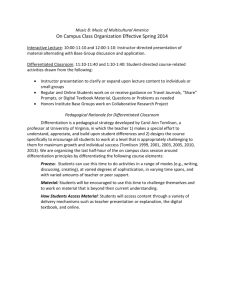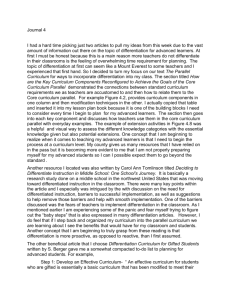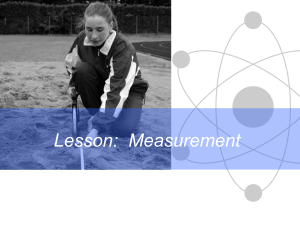Leadership for Differentiating Schools and Classrooms
advertisement
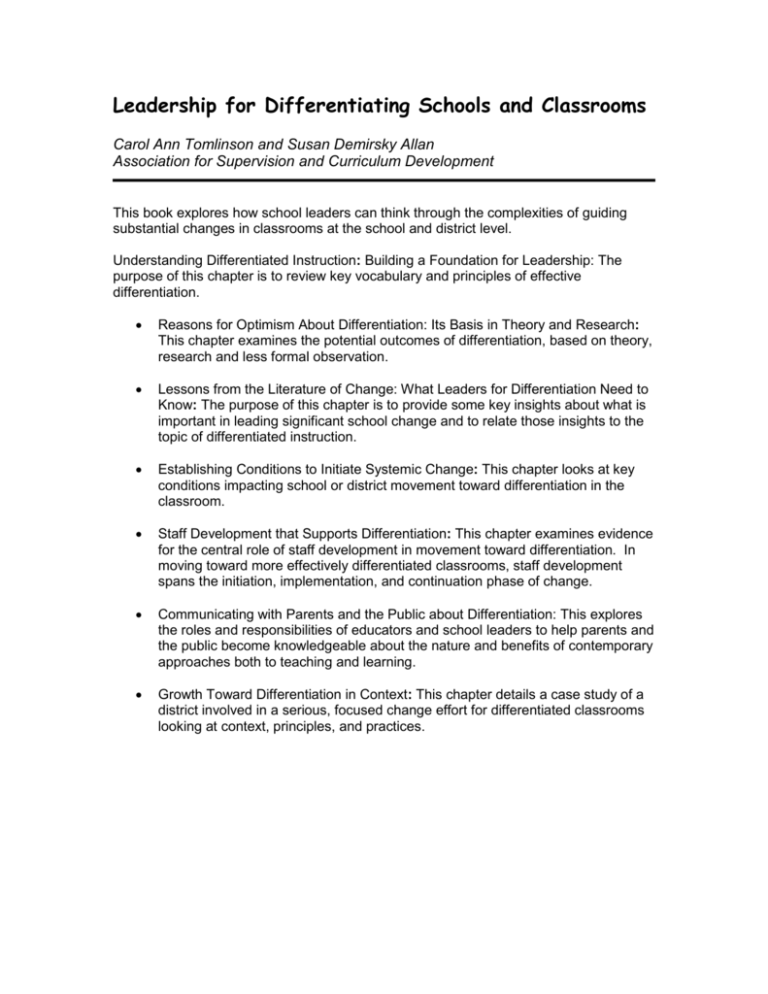
Leadership for Differentiating Schools and Classrooms Carol Ann Tomlinson and Susan Demirsky Allan Association for Supervision and Curriculum Development This book explores how school leaders can think through the complexities of guiding substantial changes in classrooms at the school and district level. Understanding Differentiated Instruction: Building a Foundation for Leadership: The purpose of this chapter is to review key vocabulary and principles of effective differentiation. Reasons for Optimism About Differentiation: Its Basis in Theory and Research: This chapter examines the potential outcomes of differentiation, based on theory, research and less formal observation. Lessons from the Literature of Change: What Leaders for Differentiation Need to Know: The purpose of this chapter is to provide some key insights about what is important in leading significant school change and to relate those insights to the topic of differentiated instruction. Establishing Conditions to Initiate Systemic Change: This chapter looks at key conditions impacting school or district movement toward differentiation in the classroom. Staff Development that Supports Differentiation: This chapter examines evidence for the central role of staff development in movement toward differentiation. In moving toward more effectively differentiated classrooms, staff development spans the initiation, implementation, and continuation phase of change. Communicating with Parents and the Public about Differentiation: This explores the roles and responsibilities of educators and school leaders to help parents and the public become knowledgeable about the nature and benefits of contemporary approaches both to teaching and learning. Growth Toward Differentiation in Context: This chapter details a case study of a district involved in a serious, focused change effort for differentiated classrooms looking at context, principles, and practices. Planning for the “What” and “How” of Differentiation: This chapter provides a challenge for educational leaders as they encourage guidance and support for developing a growing number of classrooms capable of addressing academic diversity. Prepared by Gloria A. Lacey, MDE January 2006 2


